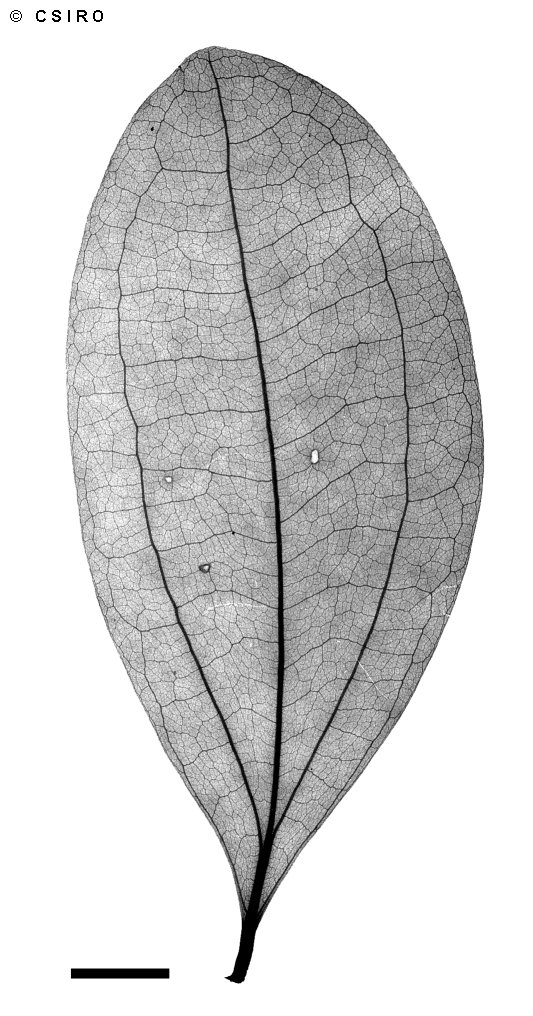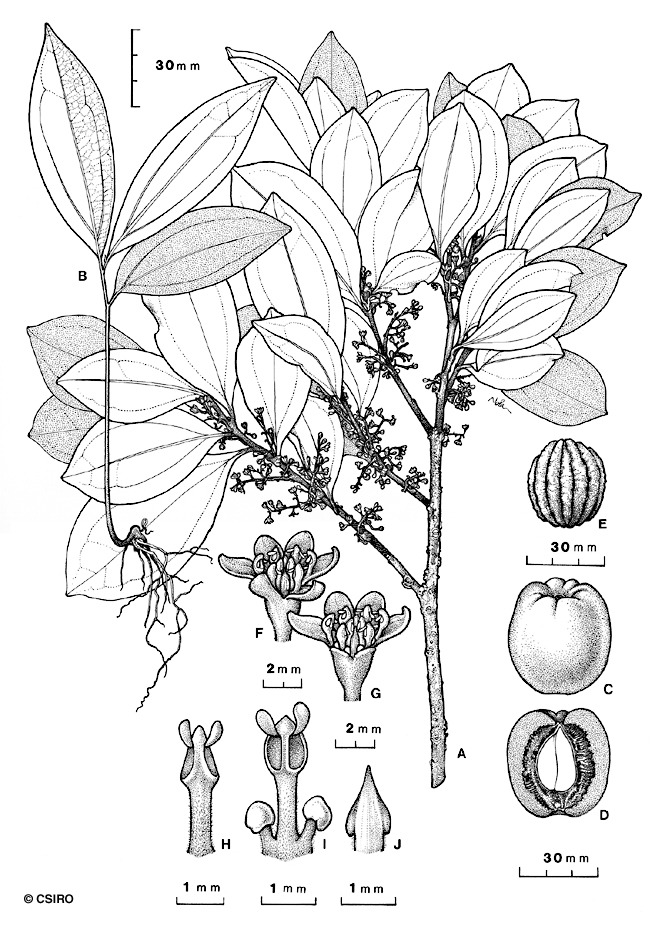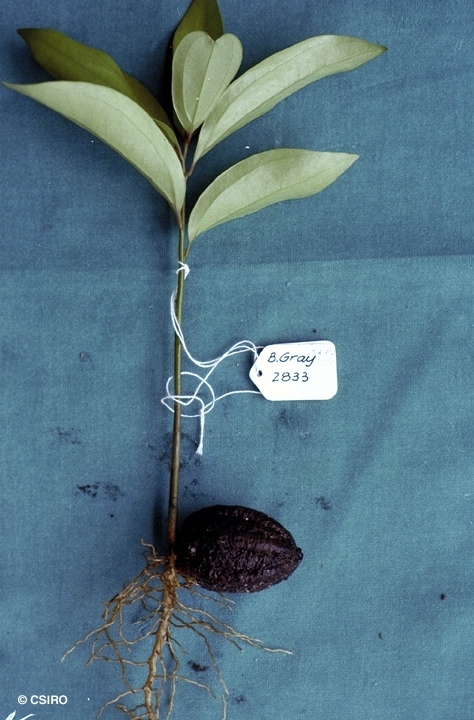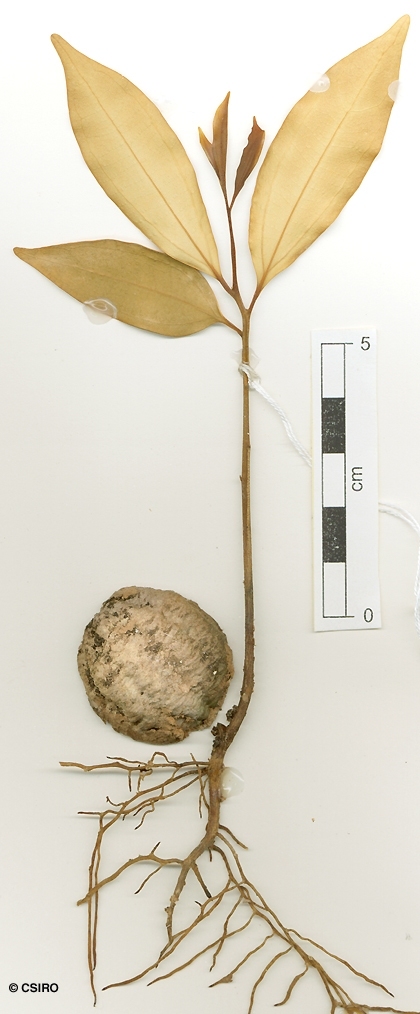Australian Tropical Rainforest Plants - Online edition
Cryptocarya pleurosperma C.T.White & W.D.Francis








White, C.T. & Francis, W.D. (1924) Proceedings of the Royal Society of Queensland 35: 77. Type: Bellenden-Ker, C.T. White (type);.
Walnut, Poison; Poison Laurel; Laurel, Poison; Poison Walnut
Lenticels usually in vertical lines. A thin cream or pale brown layer generally visible beneath the subrhytidome layer before the first section of the outer blaze.
Twigs terete, clothed in straight, pale brown, appressed hairs when young, soon becoming glabrous. Leaf blades about 7.2-16 x 3.5-7 cm, green on the underside, sparsely clothed in straight, white, appressed hairs only when very young, soon becoming glabrous. Leaves conspicuously 3-veined, the main lateral veins leaving the midrib 5-30 mm from the base. Midrib flush with the upper surface. Petioles flat or channelled on the upper surface. Oil dots visible with a lens.
Fruits usually globular, sometimes ellipsoid or pyriform, often longitudinally ribbed, about 41-62 x 27-49 mm. Endocarp thick and hard, conspicuously longitudinally ribbed. Cotyledons cream. The rat-eaten remains of the hard seed shells (endocarps) normally present on the ground beneath the larger trees.
First pair of leaves elliptic to lanceolate, about 50-90 x 18-30 mm, green on the underside. At the tenth leaf stage: leaf blade strongly 3-veined; oil dots numerous, easily visible with a lens. Terminal bud densely clothed in pale hairs, seedling otherwise glabrous. Seed germination time 198 to 747 days.
This species, particularly the bark and sawdust can cause allergic reactions, severe skin irritation and skin blistering. Everist (1974).
These reactions can even occur when protective clothing is worn. This species causes severe skin reactions and allergies. (http://bodd.web.cf.ac.uk/BotDermFolder/BotDermL/L AUR.html)
The alkaloid cryptopleurine extracted from the bark of this species showed strong activity against tumor cell cultures. This alkaloid inhibits protein synthesis. It also has a marked inhibiting effect against herpes virus. Collins et al. (1990).
This species grows large enough to produce millable logs but is seldom utilized because of the health hazards. Wood specific gravity 0.60-0.70. Hyland (1989).





